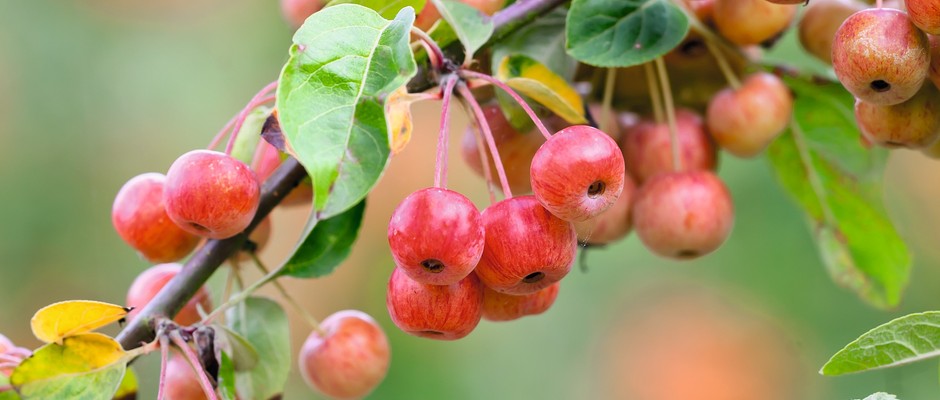
The best crab apple trees for colour and form
Kew-trained plant expert Graham Rice recommends 15 of the best crab apple trees for blossom, foliage, fruit and flavour. Photographs Dianna Jazwinski
Crab apple trees have a lot to offer. The perfect trees for small gardens, crab apples are compact and inject colour and interest into the garden all year round. In spring, the trees produce clouds of blossom that can't fail to lift the spirits, while the fruits and foliage provide rich autumnal colour.
Crab apple trees flower even when young, often blooming when two or three years old, so they're a great choice if you want a tree that performs quickly. The blossom is also invaluable to pollinators. There are many cultivars that are suited to cooking - especially to make crab apple jelly – so in all, they are versatile little trees.
Jump to
- What is a crab apple?
- When to prune crab apple trees
- The best crab apple trees to buy for blossom, foliage and fruit
- Where to see crab apple trees
Here are the reasons to grow crab apple trees
Everything you need to know about crab apple tree
What is a crab apple?
Few of the crab apples we grow in gardens are descended from our native crab apple tree (Malus sylvestris); most are derived from one or more of the 40 other wild species that grow in the temperate regions of Europe, Asia and North America. They make large shrubs or small trees, flowering prolifically, colourfully and often fragrantly in white, pink or purple in spring or early summer. Those with red flower buds opening to white flowers are the most dramatic in flower.
The autumn crop of colourful crab apple fruits often lasts well into the winter, as birds seem to leave them until last. Crab apple fruits can be small, some little more than 10mm across, but a few are as large as 5cm and weigh down the branches impressively. They can be yellow, golden, orange, scarlet, crimson red or dark purple; the yellow and orange fruits may be overlaid with pink or red.
Don't miss our crab apple jelly recipe
Crab apples are self fertile, which means they don't need another tree nearby to pollinate them. In fact, one crab apple tree can serve as pollinator for a wide range of culinary apple varieties nearby. They have a longer flowering season than culinary apples – and produce up to ten times as much pollen – so if you have at least one crab apple tree, neither you nor your neighbours need worry about the pollination of culinary apples.
When to prune crab apple trees
Crab apple trees need little or no pruning but dead, diseased or crossing branches can be removed in winter.
Showing item 1 of 7
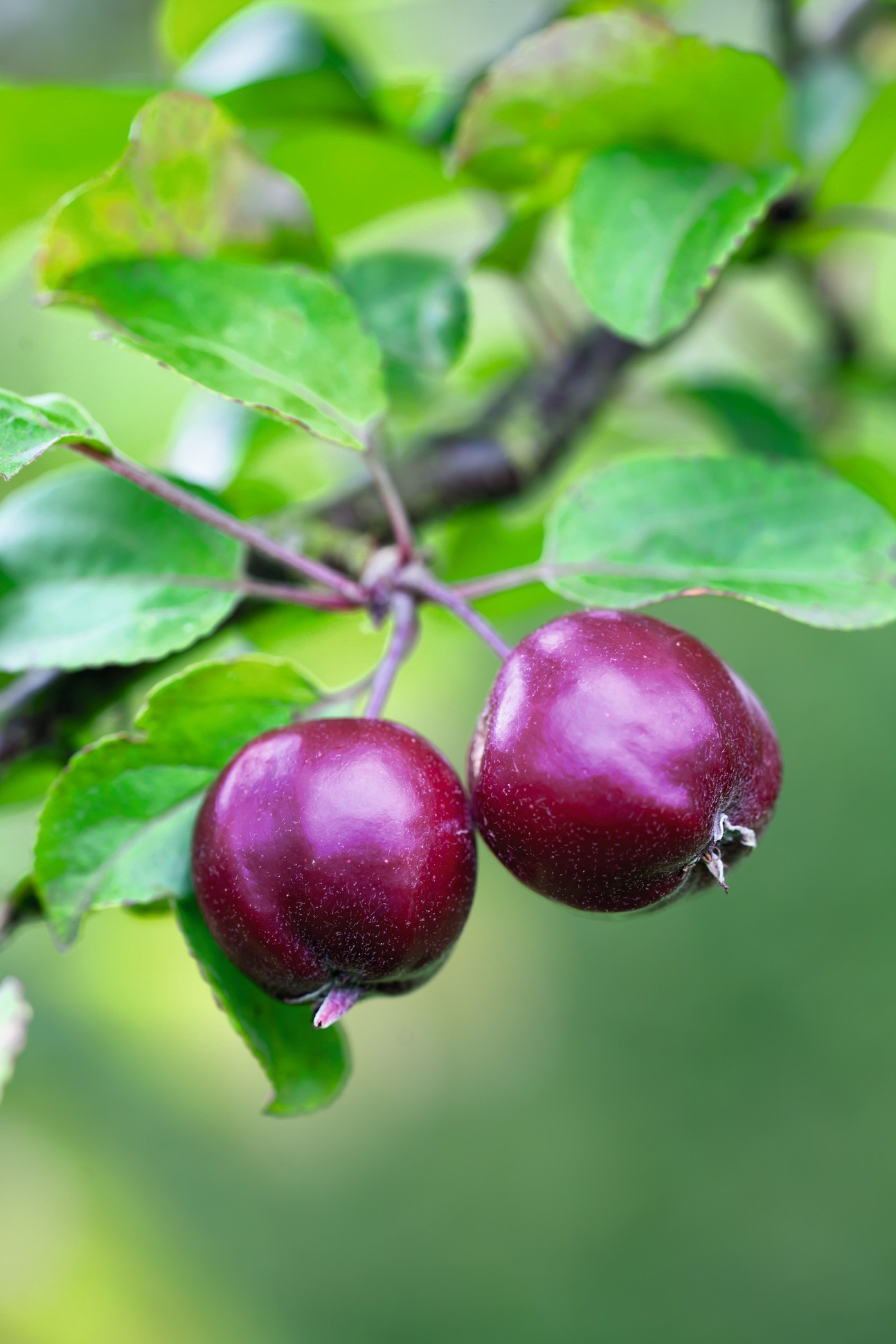
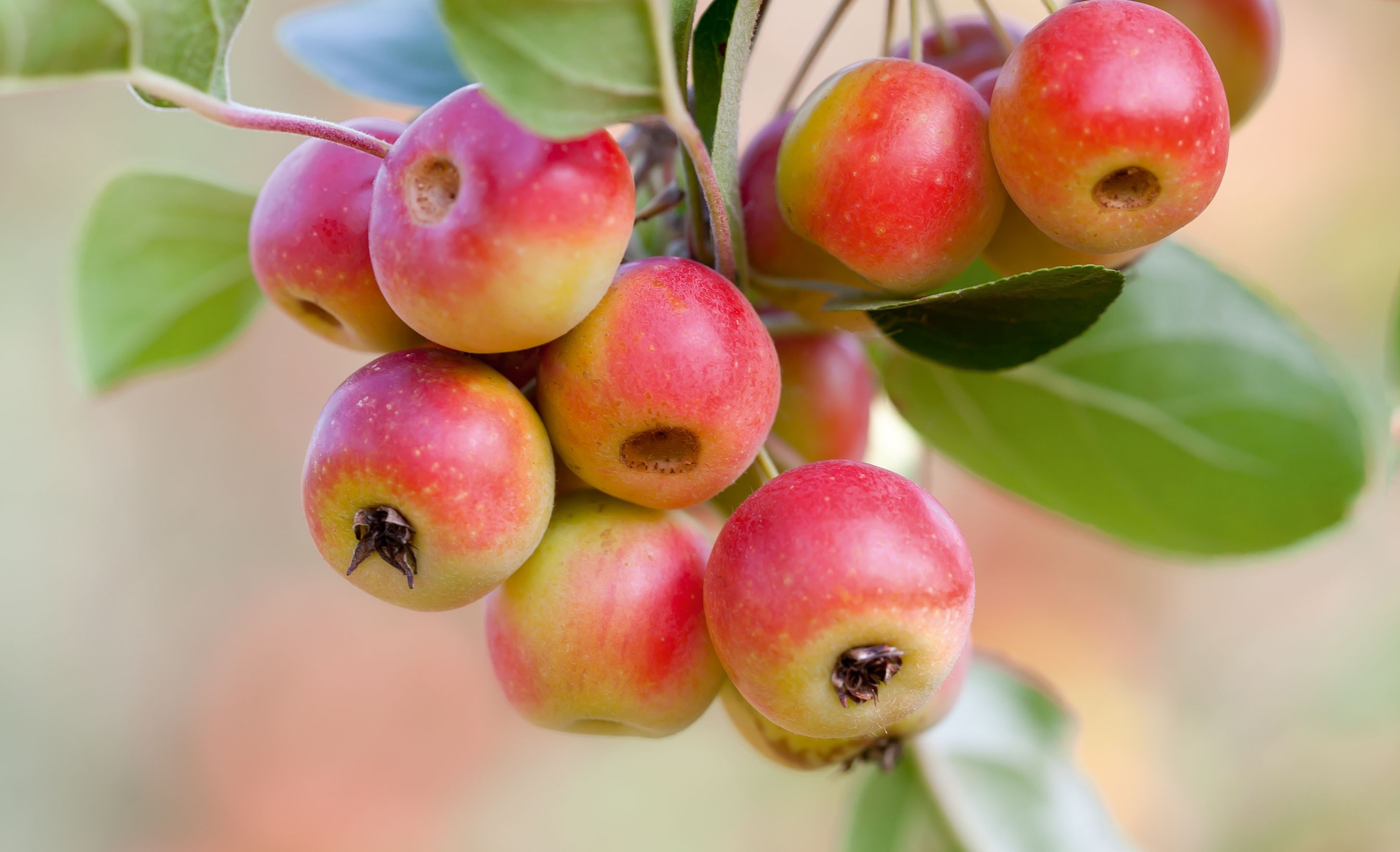
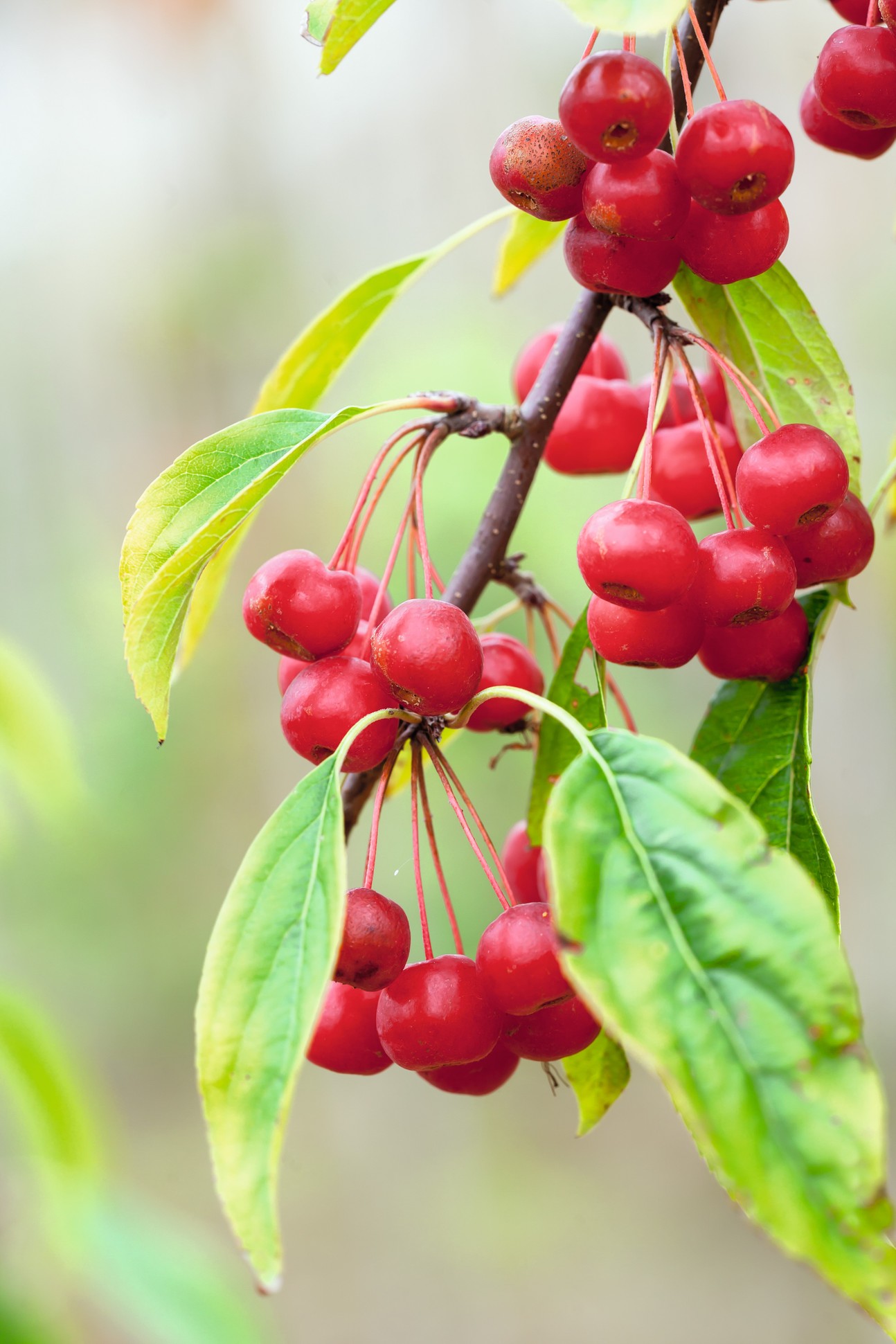
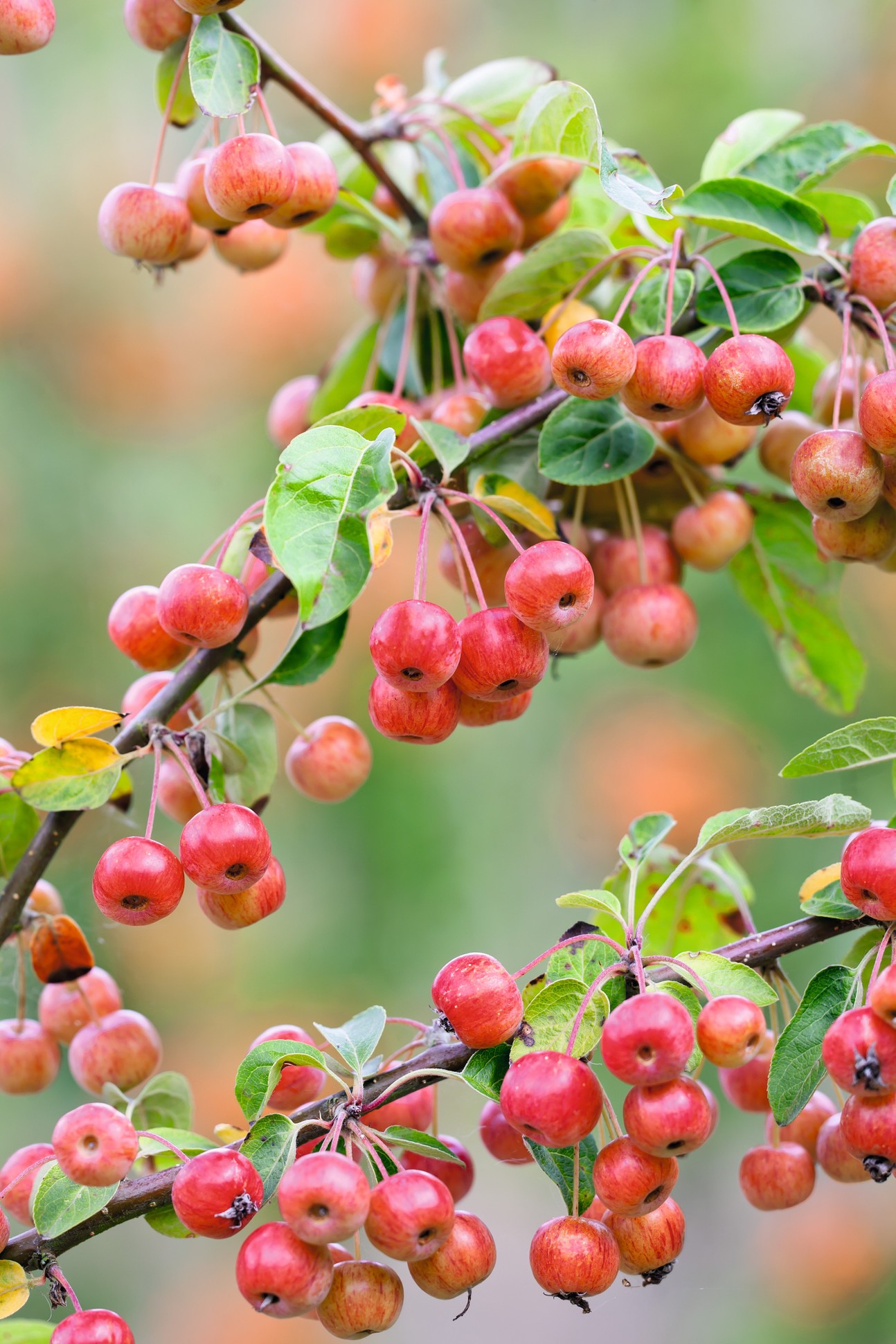
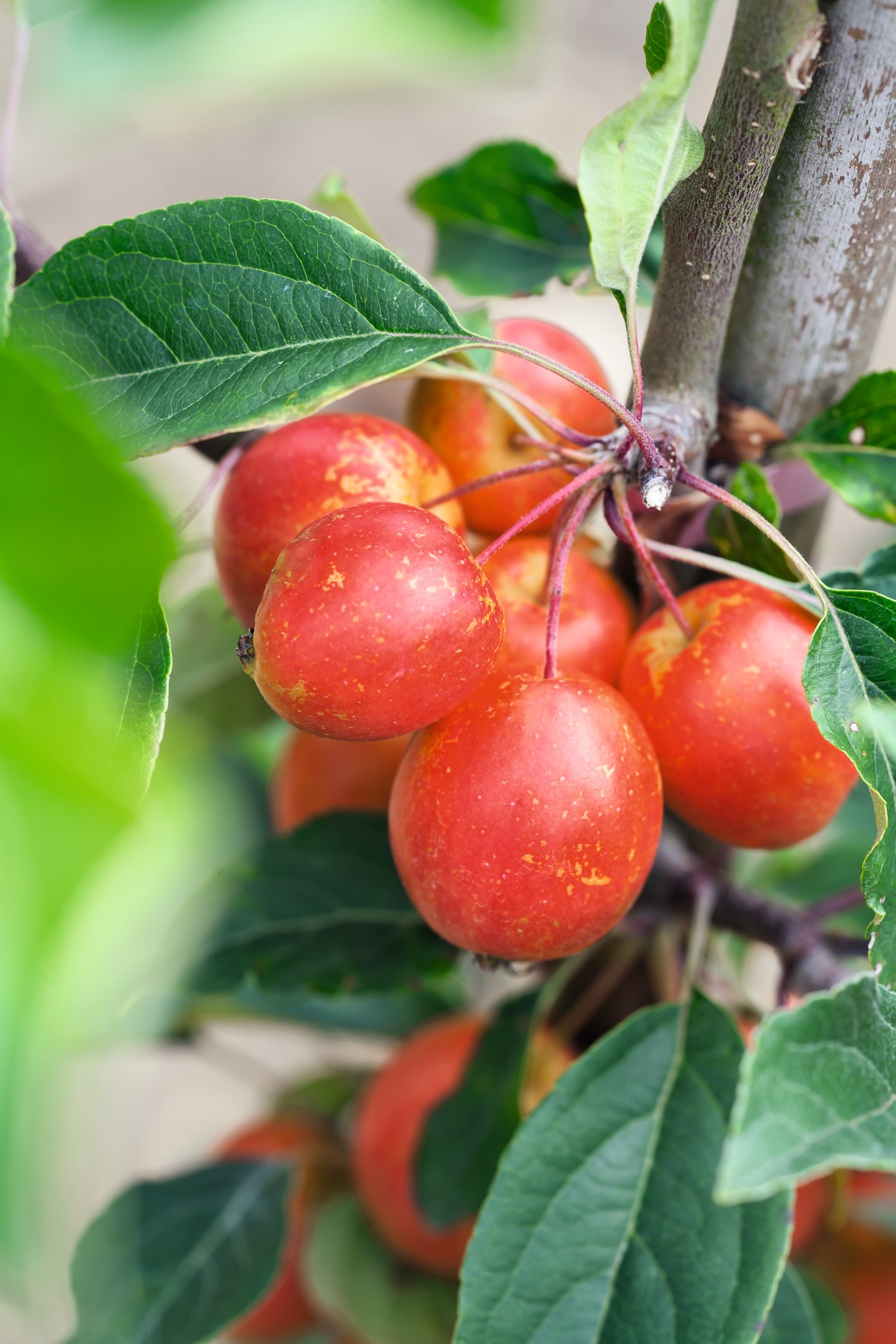
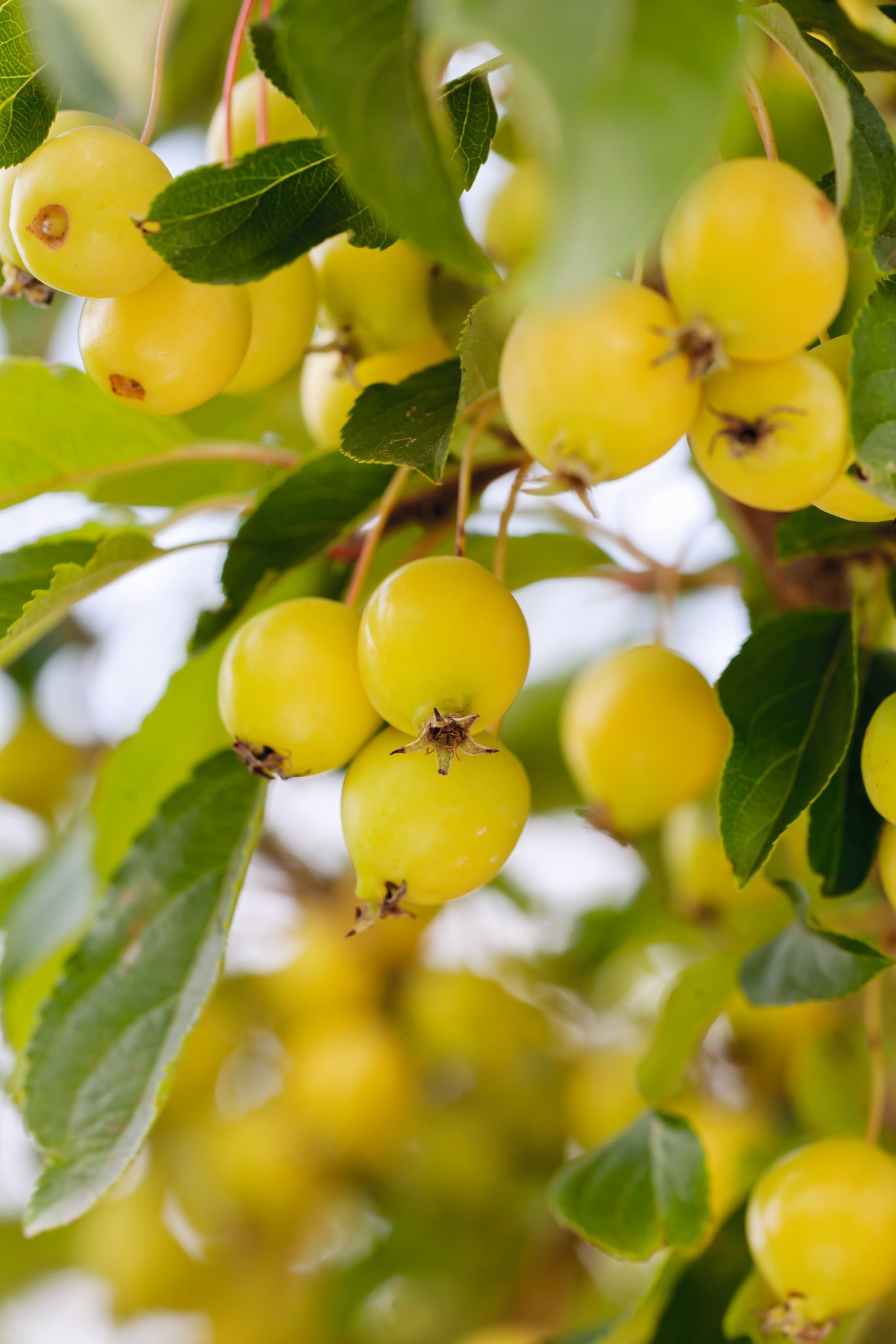
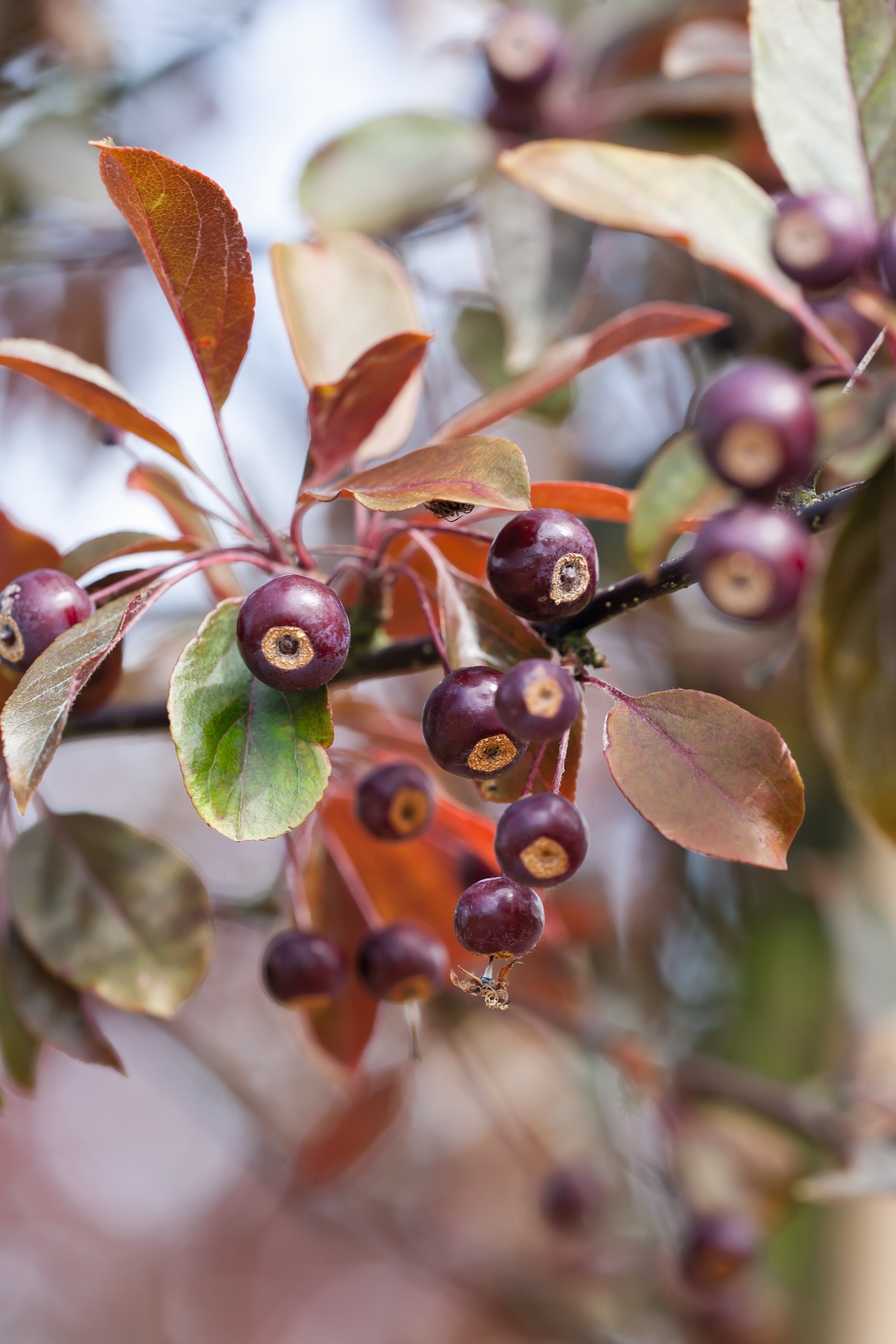








The best crab apple trees to buy for blossom, foliage and fruit
Malus 'John Downie'
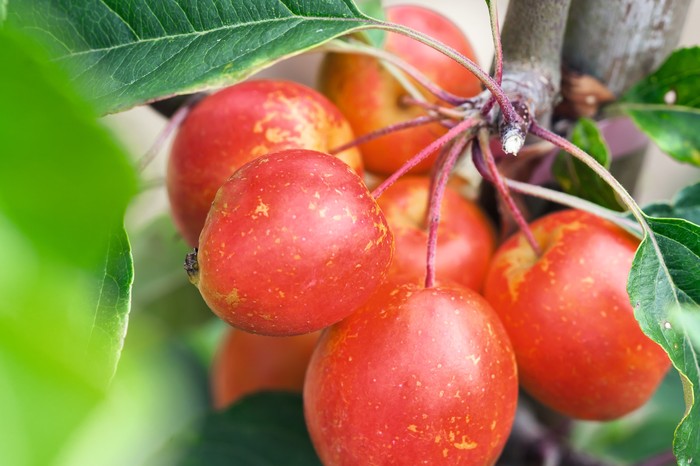
Discovered in Staffordshire in 1875, Malus 'John Downie' is considered one of the finest of crab apples. In spring, pale pink buds open to white flowers, which are much loved by pollinators. These are followed by striking oval orange-red fruits. In autumn, the leaves turn fiery shades of yellow and orange before falling. Its upright narrow habit, which becomes more conical with age, makes it a useful tree for a small or urban garden.
Grow Malus 'John Downie' in a sunny, sheltered spot for the best results. Height 10m.
Malus Sugar Tyme (=‘Sutyzam’)
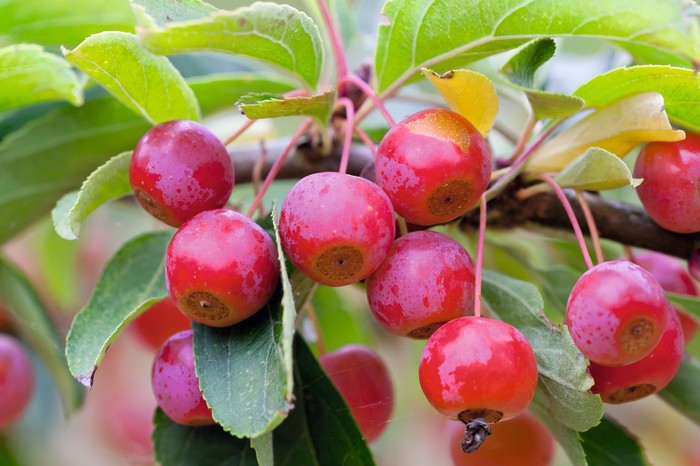
The pale-pink buds of Malus Sugar Tyme (='Sutyzam') open to white flowers. The glossy red crab apple fruits are small but make an impressive display among autumn leaves. Noted for its excellent resistance to scab, this crab apple tree copes well with other diseases too. Height 6m.
Buy Malus Sugar Tyme now from Ornamental Trees
Malus ‘Sun Rival’
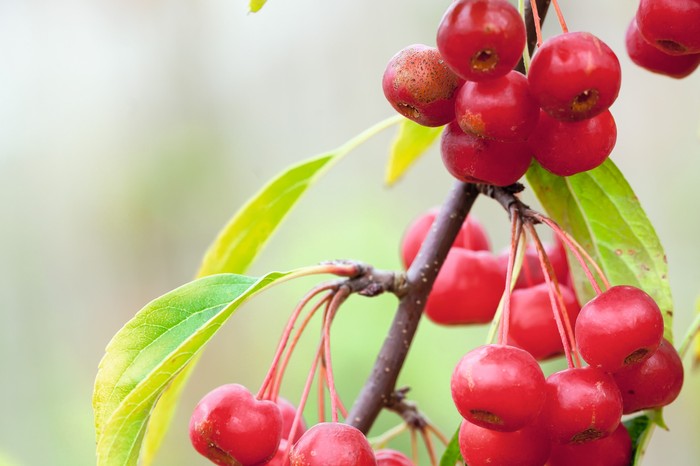
Malus 'Sun Rival' is by far the best weeping crab apple – the branches sometimes sweep the ground. It has deep red buds that fade to pink then open to white, pink-tinted blossoms. It bears bright red fruits in autumn. Height 4m. AGM.
Malus x atrosanguinea ‘Gorgeous’
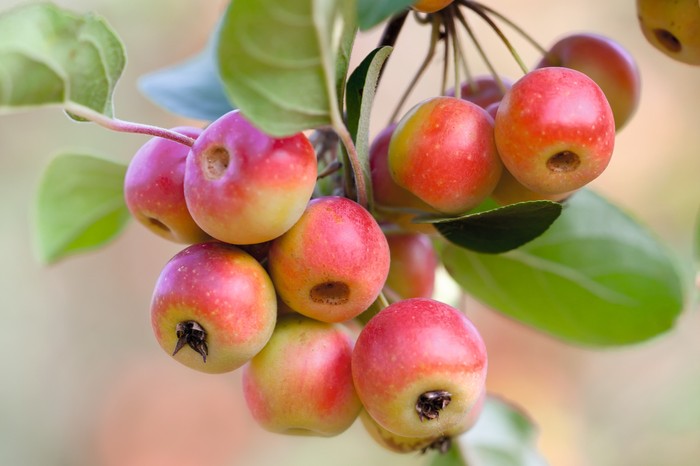
Malus x atrosanguinea 'Gorgeous' has lightly blushed white flowers, given a starry look by narrow petals. These are followed by deep-red, sometimes orange-tinted crab apple fruits that persist for months on the tree. They make unusually good crab apple jelly. Height 5m. AGM.
Buy Malus x atrosanguinea 'Gorgeous' crab apple tree from Primrose
Malus ‘Evereste’
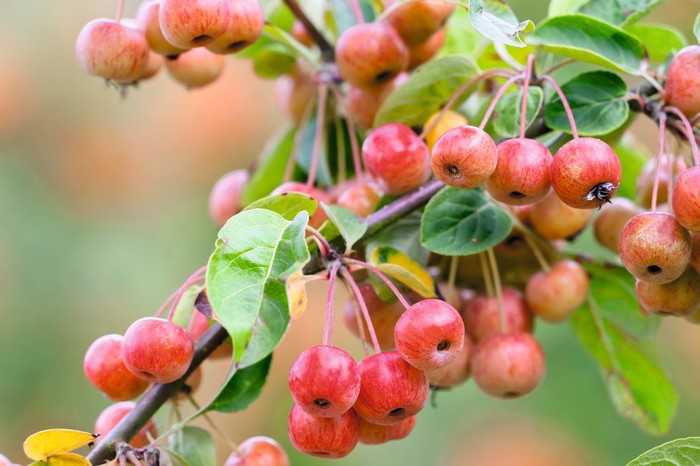
Malus 'Evereste' is a great choice for any garden as it looks good almost all year round. In spring, the scarlet flower buds fade to pink before opening into a flurry of unusually large, white flowers. Once pollinated, these then turn into to yellowish-orange fruits with a red flush that last on the tree well into winter. In autumn, the leaves turn yellow and bronze before falling, giving an additional season of interest. Originally marketed as a patio crab apple thanks its upright, conical shape, Malus 'Evereste' is an excellent tree for a small garden. Height 7m. AGM.
Malus ‘Butterball’
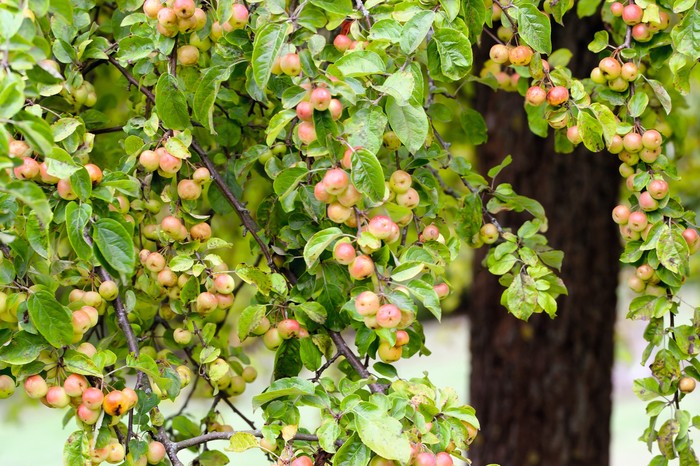
Malus 'Butterball' is a spreading crab apple tree with an appealing, slightly pendulous habit, especially when in fruit. Pink buds open to blushed-white flowers. The golden-yellow fruits that follow develop reddish tints on the tops or sides wherever they are not shaded. Height 4m. AGM.
Malus ‘Comtesse de Paris’
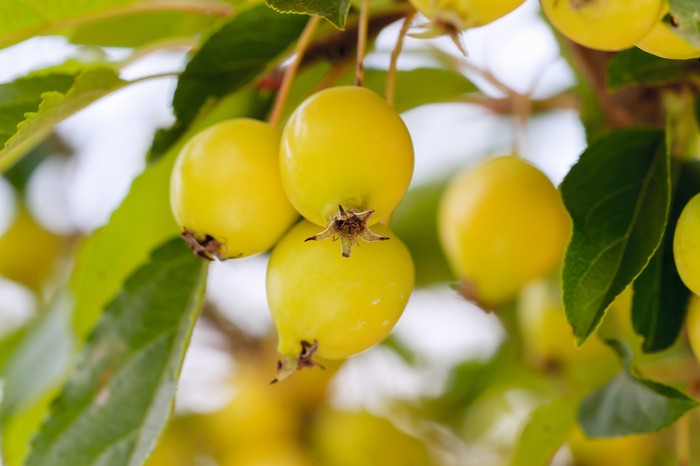
The white flowers of Malus 'Comtesse de Paris' are followed by slightly pointed, golden-yellow fruits that last well into winter. This crab apple is more balanced in shape than the similar ‘Golden Hornet’ and more resistant to scab. Height 4m. AGM.
Buy Malus 'Comtesse de Paris' now from Crocus
Malus ‘Adirondack’

Often sold as ‘Admiration’, Malus 'Arindonack' is valuable in small spaces, thanks to its upright habit. Deep, carmine-pink buds open to clusters of pure white flowers followed by pinkish-red fruits. An excellent crab apple pollinator. Height 5.5m. AGM.
Buy Malus 'Arindonack' now from Crocus
Malus x zumi ‘Professor Sprenger’
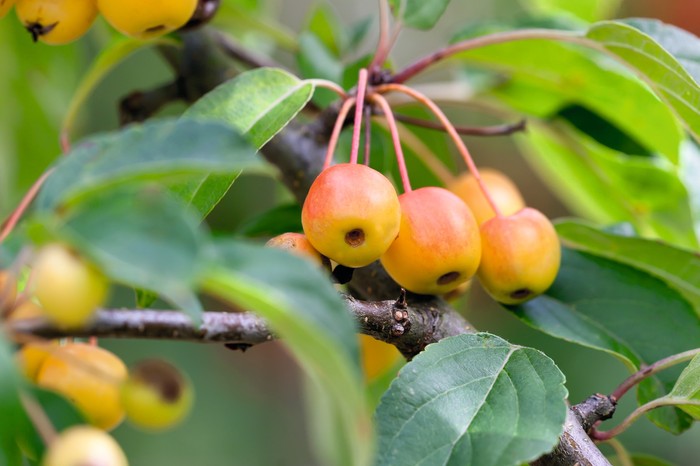
The pink flower buds of Malus x zumi 'Professor Sprenger' fade to blush before opening white. The scented flowers on this crab apple are followed by amber fruits that deepen to orange. This crab apple also benefits from yellow autumn foliage and exceptional disease resistance. Height 6m.
Buy Malus x zumi ‘Professor Sprenger’ now from Pippin Trees
Malus ‘Wisley Crab’
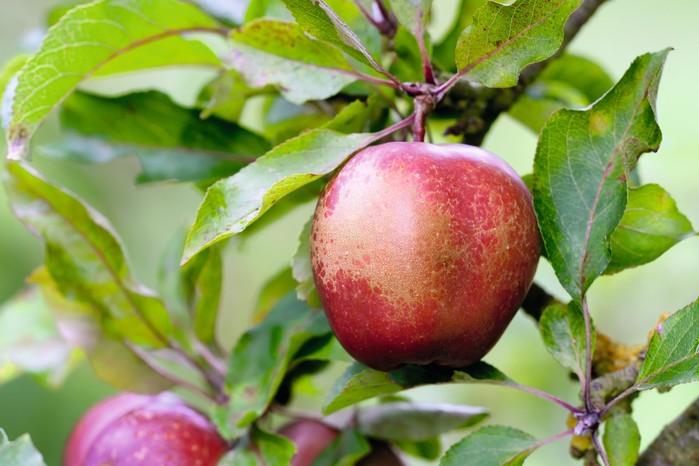
The rich, purplish-pink flowers of Malus 'Wisley Crab', dark towards the centre of each petal, open against the purple-tinted green foliage. These are followed by purplish-red fruit, which are red inside and the size of a small eating apple. Height 3m.
Buy Malus ‘Wisley Crab’ now from Keepers Nursery
Malus ‘Indian Magic’
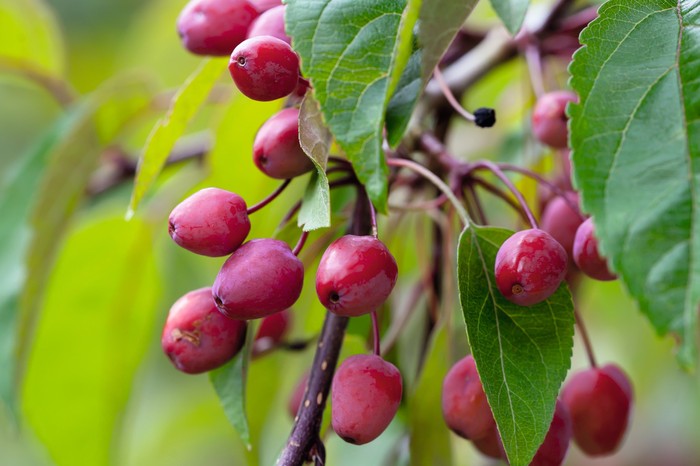
Malus 'Indian Magic' is a broadly spreading but upright crab apple tree with deep-pink flowers that open from even darker buds. Later small, rather elongated orange fruits become red and last well into winter. Disease resistance is good. Height 5m. AGM.
Buy Malus 'Indian Magic' now from Crocus
Malus x robusta ‘Red Sentinel’
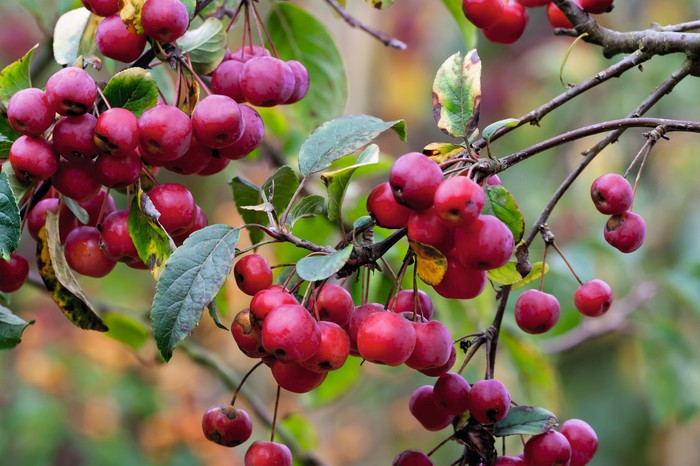
Malus x robusta 'Red Sentinel' has fragrant white spring flowers that open from pale pink buds. Large, glossy, deep-red fruits follow and last almost until spring. It also has yellow autumn leaf colour and impressive disease resistance. Height 8m. AGM.
Buy Malus x robusta from Primrose
Malus ‘Harry Baker’
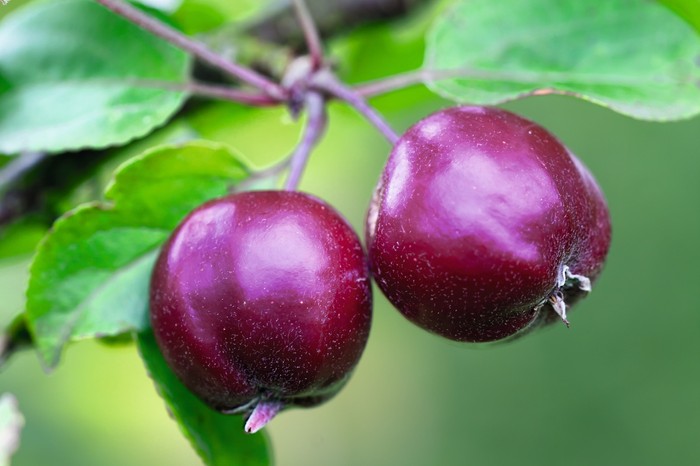
The huge purplish-pink flowers of Malus 'Harry Baker' open against purple foliage that fades to green, followed by ruby-red fruits. The tree was named for a fruit foreman at RHS Garden Wisley. It has good disease resistance and makes a superb crab apple jelly. Height 5m. AGM.
Buy Malus ‘Harry Baker’ now from Pippin Trees
Malus toringo ‘Scarlett’
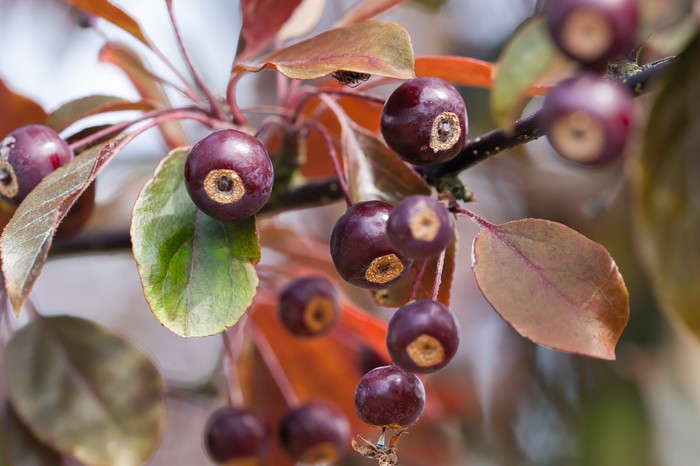
As well as offering pink spring flowers and long-lasting purple fruits, Malus toringo 'Scarlett' also provides leaves that are purple as they unfurl then mature to fiery orange and yellow in autumn. This crab apple's slightly weeping growth only adds to the appeal. Height 4m. AGM.
Buy Malus toringo ‘Scarlett’ now from Crocus
Where to see crab apple trees
National Collection holders:
Brogdale Collections
Brogdale Farm, Brogdale Road, Faversham, Kent ME13 8XZ.
Tel 01795 536250, brogdalecollections.co.uk
Christabella Charitable Trust
Barnards Farm, Brentwood Road, West Horndon, Essex CM13 3LX.
Tel 01277 811262, barnardsfarm.eu
Jodrell Bank Discovery Centre
The University of Manchester, Macclesfield, Cheshire SK11 9DL.
Tel 01477 571766, jodrellbank.net
Authors
Graham Rice is a garden writer and plantsman, who is editor-in-chief of the RHS Encyclopedia of Perennials. He writes for a wide range of newspapers and magazines including The Garden and The Plant Review and is a member of the RHS Herbaceous Plant Committee and Floral Trials Committee.

Niwaki bundle worth £57 when you subscribe
Subscribe to Gardens Illustrated magazine and claim your Niwaki bundle worth £57
*UK only

Container Gardening Special Edition
The Gardens Illustrated Guide to Container Gardening.
In this special edition, discover colourful flower combinations and seasonal planting schemes for pots designed by leading plantspeople, and essential know-how for container gardening success. Just £9.99 inc UK p&pBy entering your details, you are agreeing to our terms and conditions and privacy policy. You can unsubscribe at any time.
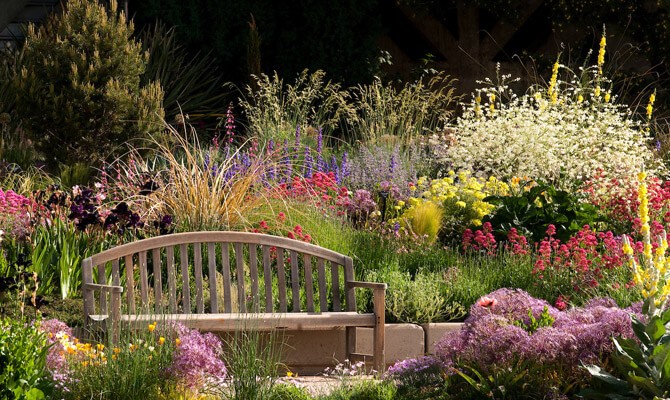
Gardens of the Globe
From botanical wonders in Australia to tranquil havens closer to home in Ireland, let this guide help you to discover some of the most glorious gardens around the world
By entering your details, you are agreeing to our terms and conditions and privacy policy. You can unsubscribe at any time.




